Introduction
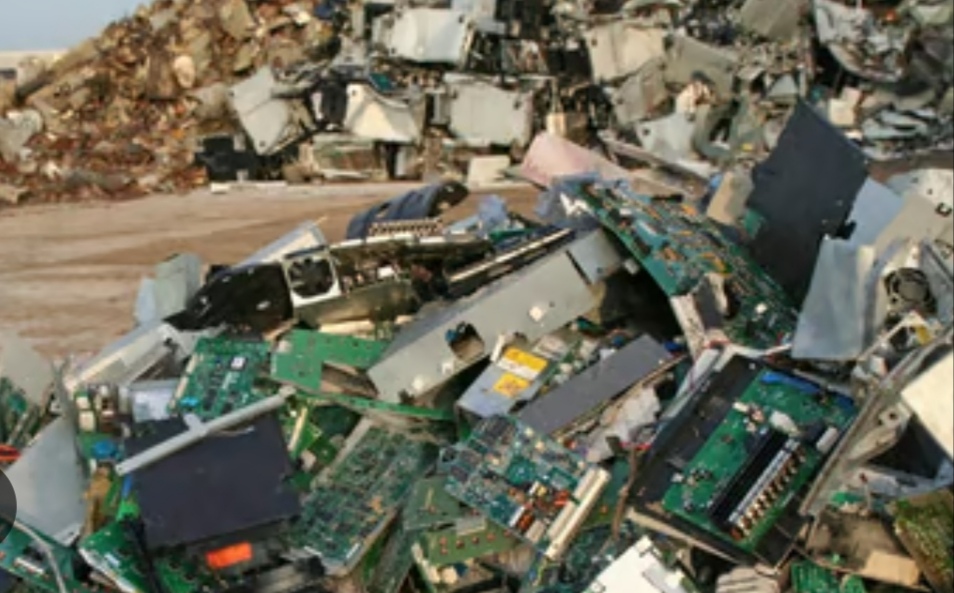
The Growing Issue of Electronic Waste (E-Waste)
Statistics on E-Waste Generation
In today’s fast-paced digital age, the amount of outdated gadgets piling up in homes, offices, and landfills is staggering.
Each year, the world generates over 50 million metric tons of electronic waste (e-waste), a number expected to double by 2050 if current trends persist.
Surprisingly, only 20% of e-waste is formally recycled, leaving the rest to pollute the environment or waste away in storage.
This growing mountain of discarded electronics stems from shorter device lifecycles, frequent upgrades, and the consumer tech industry’s relentless innovation.
Smartphones, laptops, tablets, and gaming consoles often become obsolete within a few years, contributing to this global crisis.
When you search for ways to deal with these outdated devices, you might wonder, “How to recycle old gadgets responsibly?” The answer is both critical and achievable with the right approach.
Environmental and Health Impacts
E-waste isn’t just clutter—it’s a serious environmental hazard.
Many gadgets contain toxic substances like lead, mercury, and cadmium, which can leach into the soil and groundwater when improperly discarded.
This contamination poses severe risks to both ecosystems and human health.
Moreover, electronic devices are rich in valuable materials, including gold, silver, and rare earth elements.
When gadgets are dumped instead of recycled, these resources are wasted, leading to more mining and further environmental degradation.
Improper e-waste disposal also affects communities, particularly in developing countries, where informal recycling processes expose workers to dangerous toxins.
It’s crucial to embrace sustainable practices to reduce these impacts and protect future generations.
Importance of Responsible Gadget Disposal
Benefits to the Environment
Recycling or trading in your old gadgets is one of the easiest ways to contribute to environmental sustainability. By opting for proper disposal methods, you can:
- Prevent toxic pollution caused by landfill disposal.
- Reduce the carbon footprint associated with manufacturing new electronics by conserving materials.
- Support a circular economy, where resources are reused and repurposed rather than discarded.
When you understand how to recycle old gadgets, you’re actively reducing waste, conserving natural resources, and combating climate change.
Conservation of Resources
By learning about options such as [recycling programs from top manufacturers], certified e-waste centers, and donation opportunities, you’ll not only keep your gadgets out of landfills but also support a sustainable future.
Key Takeaways:
- E-waste is a global crisis with significant environmental and health implications.
- Proper disposal methods protect the environment and conserve valuable resources.
- Knowing how to recycle old gadgets responsibly empowers you to make eco-friendly choices that benefit everyone.
Ready to take the first step? Keep reading to discover actionable tips, programs, and creative ideas to responsibly recycle or trade in your old gadgets. Don’t let your outdated tech go to waste!
Preparing Your Gadgets for Recycling or Trade-In
Before you dive into the process of recycling or trading in your old gadgets, it’s essential to take a few preparatory steps.
These measures ensure your personal data is safe, your gadgets are in the best possible condition, and you get the maximum value from trade-in programs.
Here’s a step-by-step guide on how to prepare your devices.
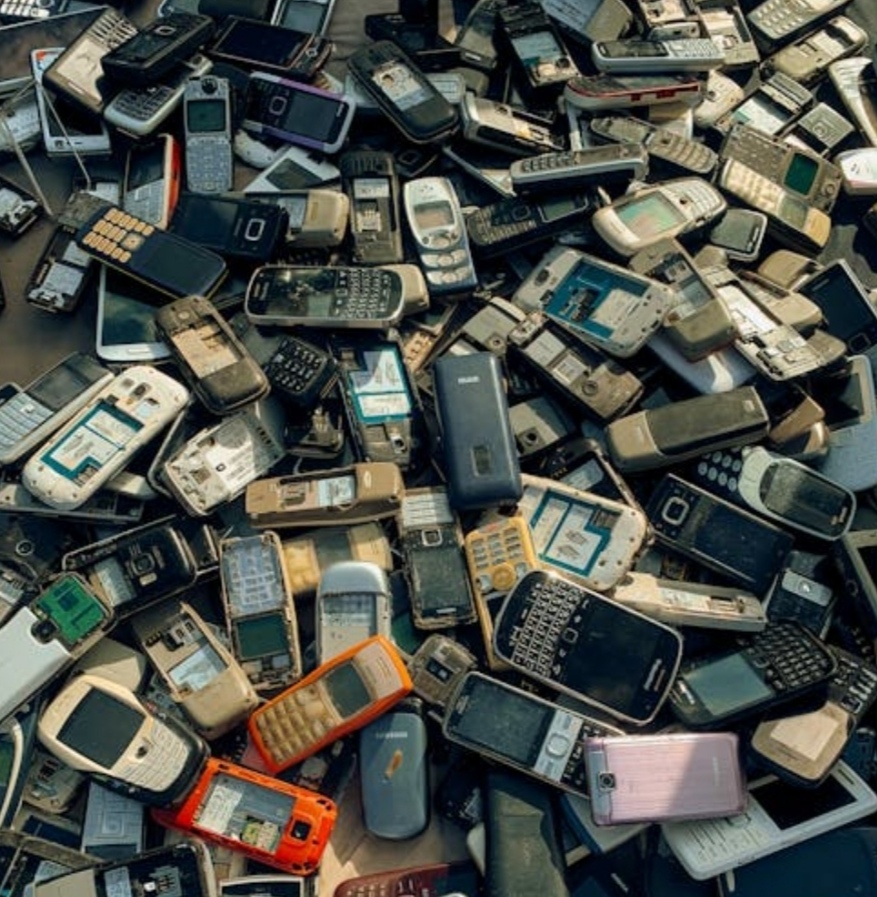
Data Backup and Removal
Your electronic devices hold a wealth of personal information—photos, passwords, bank details, and more.
Safeguarding this data before recycling or trading in your gadgets is a crucial step in the process.
Steps to Back Up Important Data
- Use Cloud Services: Sync your device with cloud services like Google Drive, iCloud, or OneDrive to save files, photos, and videos.
- External Storage: Transfer critical files to an external hard drive or USB stick for an additional layer of security.
- Specialized Backup Tools: Use apps like [Acronis True Image] or [EaseUS Backup Software] for a comprehensive backup of all system files.
- Double-Check: Once your data is backed up, verify that all essential files have been transferred successfully.
How to Perform a Factory Reset
- Smartphones (iOS/Android):
- iPhone: Go to Settings > General > Transfer or Reset iPhone > Erase All Content and Settings.
- Android: Navigate to Settings > System > Reset Options > Erase All Data (Factory Reset).
- Laptops (Windows/Mac):
- Windows: Access Settings > Update & Security > Recovery > Reset This PC.
- Mac: Restart into Recovery Mode (Command + R) and use Disk Utility to erase the disk.
- Smart Devices: For other gadgets like smartwatches, refer to the manufacturer’s guide for reset instructions.
Pro Tip: For added security, use tools like [Blancco] or [DBAN] to overwrite sensitive data, ensuring it’s completely unrecoverable.
Physical Cleaning and Maintenance
A clean and well-maintained device is more likely to fetch a higher trade-in value and make a positive impression if donated.
Additionally, cleaning ensures your gadget meets the requirements of recycling centers.
Cleaning Tips for Different Devices
- Smartphones and Tablets: Use a microfiber cloth and a small amount of isopropyl alcohol to remove fingerprints and grime from screens. Avoid using excessive liquid near ports.
- Laptops: Blow out dust from vents using a can of compressed air. Wipe the screen and keyboard with a damp cloth.
- Accessories: Don’t forget to clean chargers, earphones, and other accessories that you plan to recycle or trade.
Important: Ensure the device is completely dry before packing it for trade-in or recycling.
Assessing Device Condition
- Checklist for Assessment:
- Are there any cracks or scratches on the screen?
- Does the device power on and function correctly?
- Are all accessories (chargers, cables) intact?
- Is the battery life reasonable?
- Why It Matters: Devices in better condition often qualify for higher trade-in values or may be more appealing to donation recipients.
Take Action Now
Preparing your gadgets for recycling or trade-in is the first step toward reducing electronic waste and protecting the environment.
Follow these steps today and ensure your devices are ready to be recycled responsibly or traded in for maximum value.
Want to learn more?
Discover the [best trade-in programs] and [top recycling options] in the sections below to make informed decisions and contribute to a greener planet!
Recycling Options for Old Gadgets
When considering how to recycle old gadgets responsibly, there are multiple convenient and reliable options.
From leveraging manufacturer programs to utilizing community events, the right choice ensures your devices are handled sustainably.
Below, we break down the most effective recycling methods to help you make informed decisions.
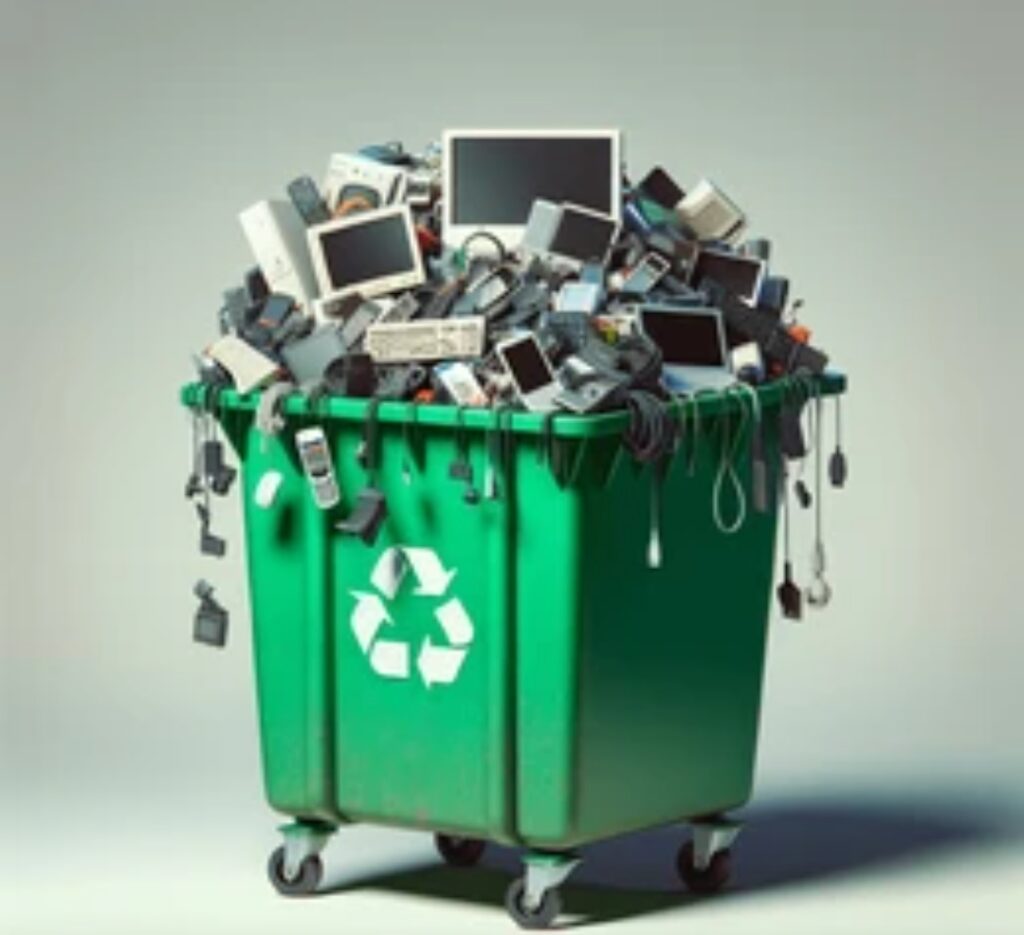
Manufacturer and Retailer Recycling Programs
Many tech manufacturers and retailers have launched robust recycling programs to help customers responsibly dispose of their old gadgets.
These initiatives not only make recycling accessible but also contribute to the circular economy by reclaiming valuable materials.
Apple Recycling Program
Apple’s Trade-In and Recycling Program is one of the most popular options for those wondering how to recycle old gadgets. The program allows users to trade in eligible devices for credit toward a new purchase or recycle outdated items for free.
- What They Accept: iPhones, iPads, Macs, Apple Watches, and accessories.
- How It Works:
- Visit the [Apple Trade-In page].
- Provide details about your gadget to get an instant trade-in estimate.
- Ship your device using the free recycling kit or drop it off at an Apple Store.
- Why It’s Worth It: Apple ensures that devices are either refurbished or responsibly recycled. You can also earn discounts on future purchases.
Samsung Recycling Program
Samsung’s Recycling Direct Program simplifies the process of recycling gadgets while reducing e-waste.
- What They Accept: Smartphones, tablets, laptops, and home appliances.
- How It Works:
- Visit the [Samsung Recycling Direct page].
- Find a participating location near you.
- Drop off your old devices for recycling, free of charge.
- Bonus: Samsung also offers trade-in programs for newer gadgets, allowing customers to upgrade while responsibly disposing of older models.
Best Buy Electronics Recycling
Best Buy offers a comprehensive electronics recycling service, making it a go-to retailer for e-waste disposal.
- What They Accept: TVs, laptops, smartphones, printers, and even small appliances.
- How It Works:
- Bring your old gadgets to a nearby Best Buy store.
- Certain items, like TVs, may incur a small recycling fee.
- Customers can also take advantage of trade-in deals for store credit.
- Why Choose Best Buy: They’ve recycled over 2 billion pounds of electronics, showcasing their commitment to sustainability.
Pro Tip: Always check for restrictions or fees on larger items like TVs or appliances before visiting.
Certified E-Waste Recycling Centers
If your device is not eligible for a manufacturer program, certified e-waste recycling centers are an excellent alternative. These facilities adhere to strict standards for environmentally friendly disposal.
H4: How to Locate Certified Recyclers
- Online Directories: Use tools like [Earth911] or the [EPA’s Responsible Appliance Disposal Program] to find certified recycling centers near you.
- Local Listings: Search for “certified e-waste recyclers” in your area to identify reliable options.
- Tech Retailers: Many certified recyclers partner with stores like Staples or Office Depot for easy drop-offs.
Understanding R2 and e-Stewards Certifications
Not all recyclers are created equal. To ensure your old gadgets are handled responsibly, look for certifications such as:
- R2 (Responsible Recycling): This certification ensures recyclers meet high environmental and safety standards.
- e-Stewards Certification: A global standard that guarantees no e-waste is exported to developing countries or processed in unsafe conditions.
Choosing certified recyclers ensures compliance with regulations, minimizes environmental impact, and helps recover valuable materials from your devices.
Community E-Waste Collection Events
Another convenient option for recycling old gadgets is participating in local e-waste collection events. These events are often hosted by municipalities, schools, or environmental organizations to encourage responsible disposal.
H4: How to Find Local Events
- Check Community Websites: Many towns and cities post upcoming e-waste events on their official sites.
- Contact Recycling Centers: Reach out to certified recyclers for information about their next collection drive.
- Social Media Announcements: Follow local environmental groups or municipal pages for updates.
H4: What to Expect at Collection Events
- Free Drop-Off Services: Most events accept small electronics, batteries, and chargers at no cost.
- Specialized Recycling: Some events handle large items like refrigerators or solar panels, which are not accepted at regular centers.
- Volunteers and Education: These events often include workshops or educational materials about the importance of e-waste recycling.
Pro Tip: Prepare your devices before attending by removing personal data and ensuring they meet event guidelines.
Start Recycling Today!
Recycling your old gadgets doesn’t have to be complicated. From manufacturer programs to community events, there’s a solution for everyone.
Visit [trusted recycling programs] or check out [certified e-waste recyclers] near you today. Together, we can reduce e-waste and protect our planet!
Trade-In Programs for Old Gadgets
When exploring how to recycle old gadgets responsibly, trade-in programs offer a fantastic alternative.
Not only do these programs make the process convenient, but they also allow you to receive monetary or credit value for your used devices, making it a win-win solution for both you and the environment.
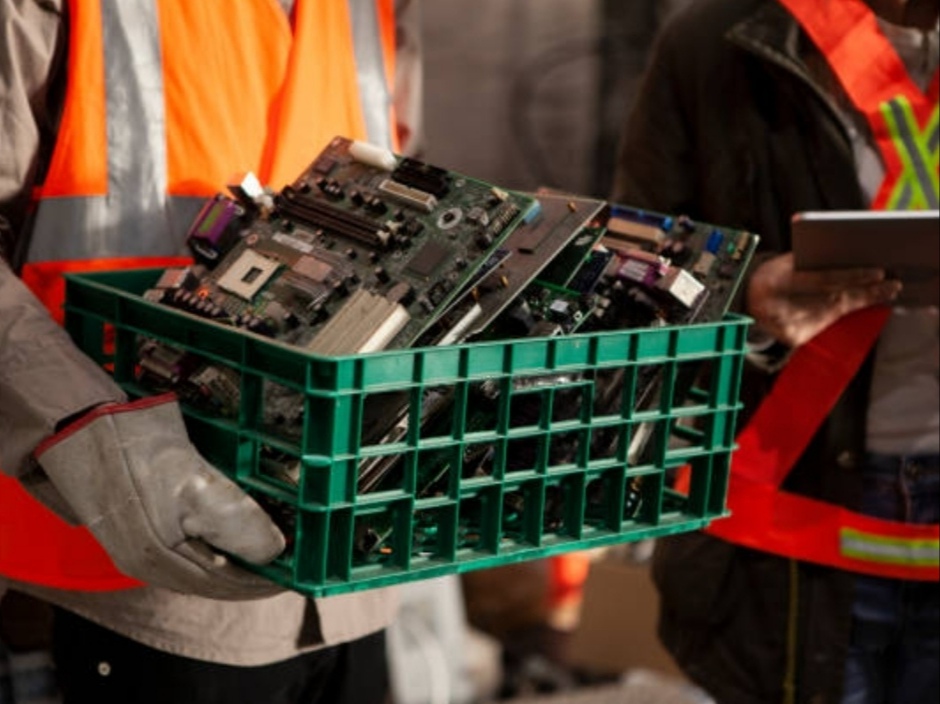
Overview of Trade-In Programs
Trade-in programs are services provided by manufacturers, retailers, and online platforms to help consumers recycle or exchange their used gadgets for cash, store credits, or discounts on new products. Here’s a closer look at how they work and their benefits:
How Trade-In Programs Work
- Evaluate Your Device: Start by assessing the condition of your gadget. Most programs accept working and non-working devices, but functionality and appearance often determine the trade-in value.
- Submit Your Device Details: Visit the program’s website or app to provide information about your device, such as brand, model, and condition.
- Receive an Offer: Based on your inputs, you’ll receive an estimated value. For in-store programs, this step may occur during the visit.
- Ship or Drop Off the Device: If you agree to the offer, you can either mail your gadget using a provided shipping label or drop it off at a store.
- Get Paid or Credited: Once your device is verified, you’ll receive cash, a gift card, or store credit.
Pro Tip: Always back up your data and perform a factory reset before participating in a trade-in program.
Benefits of Trading In Devices
- Eco-Friendly Disposal: Trade-in programs help reduce electronic waste by refurbishing or recycling old gadgets.
- Earn Value for Old Devices: Even damaged devices may have trade-in value, providing an opportunity to monetize obsolete electronics.
- Convenience: These programs eliminate the hassle of finding buyers or recycling centers.
- Incentives for New Purchases: Many programs offer discounts or credit towards new devices, making upgrades more affordable.
Major Retailer Trade-In Programs
Retailers offer well-established trade-in programs with simple processes and attractive benefits. Here are some of the most popular ones:
Amazon Trade-In Program
Amazon’s trade-in program is a straightforward way to exchange old gadgets for Amazon gift cards.
- What They Accept: Phones, tablets, e-readers, video games, and more.
- How It Works:
- Visit the [Amazon Trade-In page].
- Search for your gadget and answer condition-related questions.
- Print a free shipping label and send your device.
- Receive an Amazon gift card after verification.
- Why It’s Popular: Amazon’s program is easy to use, and the gift card can be applied to millions of products.
Best Buy Trade-In Program
Best Buy offers an in-store and online trade-in program with generous offers for newer devices.
- What They Accept: Smartphones, laptops, gaming consoles, and more.
- How It Works:
- For in-store trade-ins: Visit a nearby Best Buy with your device.
- For online trade-ins: Provide device details on their website, ship your item for free, and receive a Best Buy gift card.
- Extra Tip: Best Buy occasionally runs promotions offering higher trade-in values.
Walmart Trade-In Program
Walmart’s trade-in program, powered by CExchange, allows customers to recycle their gadgets and receive a Walmart eGift Card.
- What They Accept: Phones, tablets, game consoles, and wearable devices.
- How It Works:
- Access the program online or visit a participating Walmart store.
- Describe your device and receive an instant quote.
- Mail your gadget using a prepaid shipping label.
- Get an eGift Card after processing.
Online Platforms for Selling Used Gadgets
If you prefer to sell your gadgets outright instead of trading them in, numerous online platforms provide competitive prices and a user-friendly experience.
Swappa
- Why Choose Swappa:
- No seller fees.
- Devices must meet quality standards, ensuring reliability.
- How It Works:
- Create a listing with photos and details about your device.
- Respond to potential buyers and finalize the sale.
Decluttr
- What They Accept: Phones, tablets, laptops, CDs, and DVDs.
- How It Works:
- Enter your gadget’s details to get a free quote.
- Ship your device using their prepaid label.
- Receive payment through PayPal or direct deposit.
- Bonus: Decluttr ensures free shipping and quick transactions.
eBay
eBay remains one of the most popular platforms for selling old gadgets to a global audience.
- Why Use eBay:
- Set your price or allow bidding for competitive offers.
- Reach millions of potential buyers worldwide.
- Tips for Success:
- Use high-quality images and detailed descriptions.
- Offer competitive shipping options to attract buyers.
Make the Most of Your Old Gadgets!
Don’t let your old devices gather dust.
Whether you prefer to trade in or sell, there’s a perfect option for you.
Explore [major trade-in programs] or list your gadgets on [trusted platforms] today to earn value and contribute to a more sustainable future!
Donating Your Old Gadgets
Donating your old gadgets is one of the most impactful ways to contribute to society while addressing the question of how to recycle old gadgets.
This approach not only ensures responsible disposal but also transforms lives by providing access to technology for underserved communities.
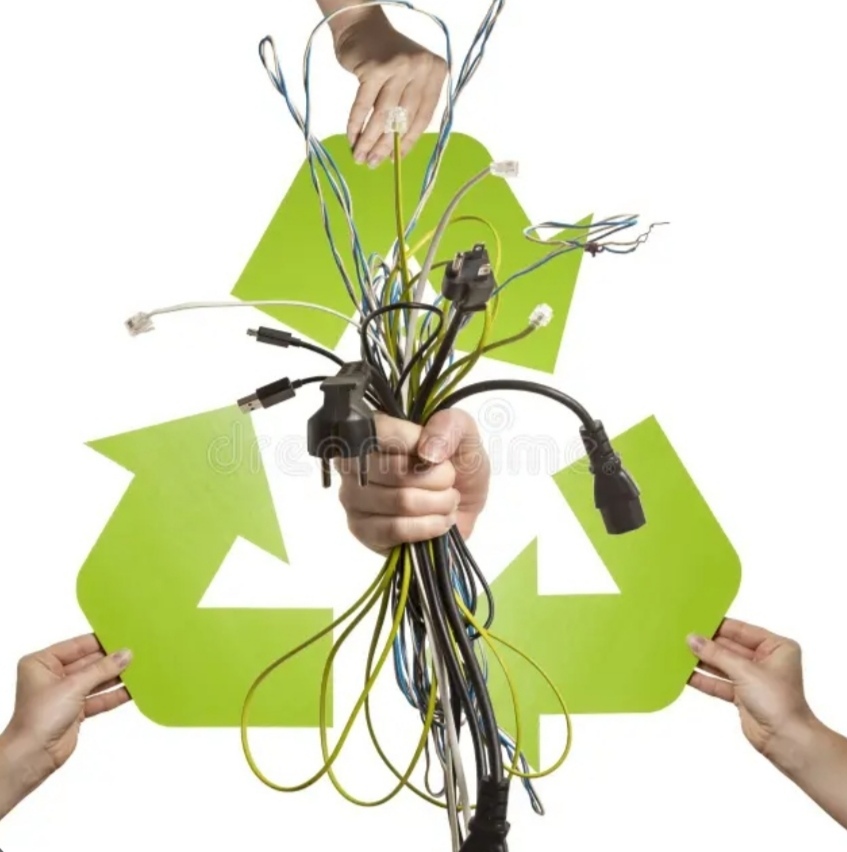
Benefits of Donating Electronics
Donating your used devices has several personal and societal benefits.
Whether you’re upgrading to a new gadget or decluttering, here’s why you should consider donating:
Supporting Non-Profit Organizations
When you donate your gadgets to non-profits, you empower them to redirect resources to their core missions, such as education, healthcare, and community development. These organizations often repurpose the devices for:
- Training programs in coding and IT skills.
- Communication and operational needs.
- Providing devices to underprivileged groups.
For example, donating laptops or tablets can help a charity run digital literacy programs for communities lacking access to technology.
Providing Access to Technology for Those in Need
Millions of people worldwide lack access to essential technology, which hinders education, job opportunities, and connection to the digital world. By donating your gadgets, you:
- Bridge the Digital Divide: Help children and adults in low-income areas connect to online resources.
- Support Remote Learning: Provide students with the tools to attend online classes and complete assignments.
- Enhance Employability: Allow individuals to apply for jobs, attend virtual interviews, and acquire new skills.
Your donation has the potential to change lives, offering opportunities that many would otherwise miss.
Organizations Accepting Electronic Donations
Several reputable organizations accept old gadgets and ensure they are put to good use. Here are some trustworthy options to consider:
Computers with Causes
This non-profit organization specializes in redistributing donated computers and electronics to families, students, and veterans in need.
- Who They Help: Underprivileged students, disabled individuals, and returning military personnel.
- How to Donate:
- Visit the [Computers with Causes website].
- Fill out their donation form.
- Arrange for a drop-off or shipping.
- Tax Benefits: Donations are tax-deductible, making it a rewarding choice.
World Computer Exchange
World Computer Exchange focuses on delivering refurbished computers to developing countries, helping schools and youth programs bridge the digital divide.
- What They Accept: Laptops, desktops, monitors, and peripherals in working condition.
- How to Get Involved:
- Locate their nearest drop-off center through their website.
- Partner with them to organize local donation drives.
- Impact: Their initiatives connect youth in developing nations to educational and economic opportunities.
Local Schools and Community Centers
Local schools and community centers are often in dire need of functional gadgets for students and community members.
- Why Donate Locally:
- Directly benefit your community.
- Support after-school programs and tech-based learning initiatives.
- How to Find Donation Opportunities:
- Contact schools or centers in your area to inquire about their needs.
- Check local forums or community groups for donation drives.
Make a Difference Today!
Donating your old gadgets can leave a lasting impact on someone’s life. Instead of letting them collect dust, give them a new purpose. Explore [trusted non-profits] or connect with [local schools] to start making a difference. Every device counts!
Creative Ways to Repurpose Old Gadgets
When it comes to how to recycle old gadgets, repurposing them creatively is an eco-friendly and cost-effective alternative.
Not only does this reduce e-waste, but it also helps you save money while giving your devices a second life.
Let’s explore some innovative ideas for turning old electronics into functional tools or exciting DIY projects.
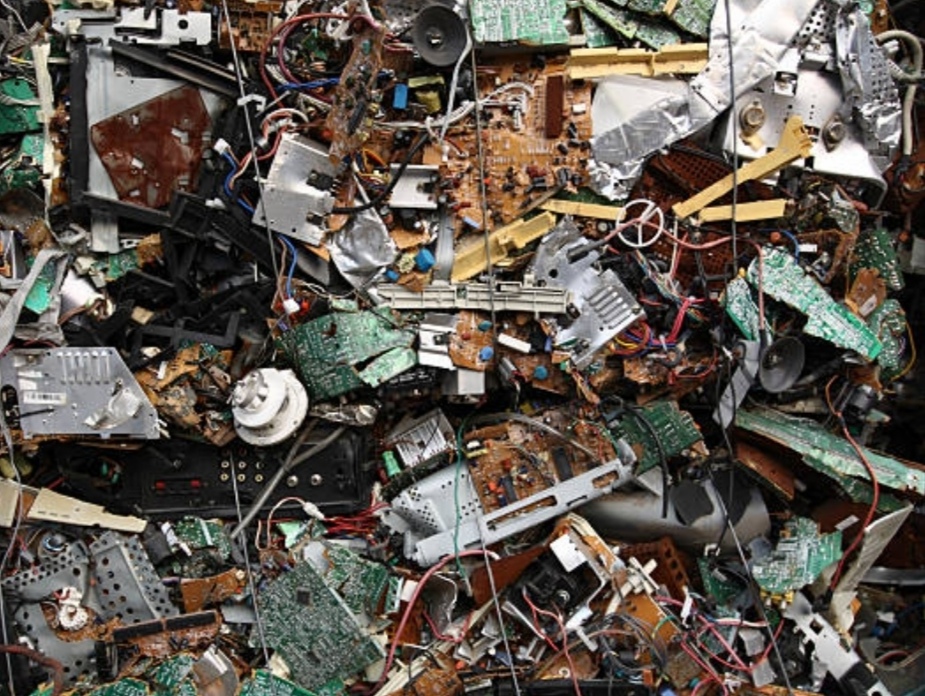
Transforming Old Devices into Useful Tools
Old gadgets may not have the latest features, but they can still serve practical purposes in your daily life. Here are some clever ways to put them to good use:
Using Old Smartphones as Security Cameras
Don’t throw away that outdated smartphone just yet! Transform it into a fully functional home security camera.
- Steps to Set It Up:
- Download a surveillance app like [Alfred Home Security Camera].
- Position the phone in a strategic location to monitor your home.
- Connect it to Wi-Fi and power for uninterrupted usage.
- Benefits:
- Save hundreds of dollars on professional security systems.
- Monitor your home remotely through your primary smartphone or computer.
- Reduce e-waste by repurposing instead of discarding.
Converting Tablets into Digital Photo Frames
Turn your old tablet into a stylish digital photo frame to showcase your cherished memories.
- How to Repurpose Your Tablet:
- Install photo slideshow apps like [Fotoo] or [Dayframe].
- Set up the tablet on a stand or wall mount.
- Upload your favorite images or sync with online albums.
- Why It’s Worth It:
- Constantly update your photo collection without printing new pictures.
- Enjoy an affordable home décor upgrade.
DIY Projects with Old Electronics
If you enjoy tinkering or crafting, your old gadgets can be a gateway to fun and educational DIY projects.
Building a Home Media Server
Your outdated laptop or desktop can become a dedicated media server for your home entertainment needs.
- Steps to Create a Media Server:
- Install software like [Plex] or [Kodi].
- Connect your old device to your TV or home network.
- Store and stream movies, music, and photos seamlessly.
- Advantages:
- Centralize all your media in one place.
- Eliminate the need for costly streaming subscriptions.
- Extend the lifespan of your old device.
Creating Educational Tools for Children
Repurpose your gadgets into learning tools for kids, turning screen time into a productive activity.
- Ideas for Educational Tools:
- Install apps for coding, math, or language learning.
- Use tablets for drawing or writing practice with stylus compatibility.
- Create an e-reader by loading it with children’s books.
- Benefits:
- Foster creativity and curiosity in young minds.
- Reduce costs of purchasing new educational materials.
Additional Creative Repurposing Ideas
Beyond the primary ideas, here are more ways to give your gadgets a second chance:
- Turn an Old Smartphone into a Remote Control: Apps like [Unified Remote] allow you to control smart devices or presentations.
- Create a Smart Mirror: Attach an old tablet behind a two-way mirror to display weather, news, or your daily calendar.
- Develop a Retro Gaming Console: Transform old computers or Raspberry Pi boards into gaming systems with emulation software.
Unleash Your Creativity Today!
Why discard your old gadgets when you can repurpose them into something amazing?
Start one of these projects today and see the impact for yourself.
Check out [trusted apps and software] to get started on these creative transformations.
Take the first step toward a sustainable lifestyle now!
Legal and Ethical Considerations
Recycling old gadgets responsibly isn’t just about protecting the environment; it also involves complying with legal requirements and ensuring ethical practices.
Learning how to recycle old gadgets while respecting laws and safeguarding data is crucial to avoid unintended consequences.
Below, we explore the key aspects of legality and ethics in e-waste disposal.
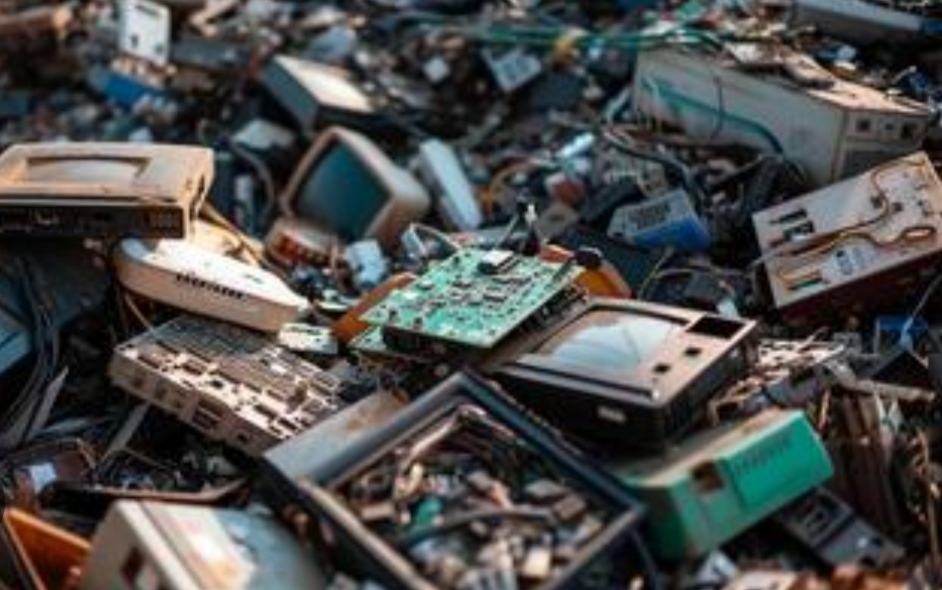
Understanding E-Waste Disposal Laws
Proper disposal of electronic waste is governed by laws to prevent environmental damage and protect human health.
Many countries have introduced regulations to address the growing problem of e-waste.
Regulations in Different Regions
Electronic waste disposal laws vary widely across the globe. Here’s an overview of regulations in major regions:
- United States:
- The Resource Conservation and Recovery Act (RCRA) governs hazardous waste, including e-waste.
- Several states, such as California and New York, have their own e-waste recycling programs.
- European Union:
- The Waste Electrical and Electronic Equipment (WEEE) Directive mandates the recycling and recovery of e-waste.
- Producers are responsible for managing e-waste disposal.
- Asia:
- Countries like Japan have strict recycling laws, such as the Home Appliance Recycling Law.
- In India, the E-Waste Management Rules regulate e-waste handling and disposal.
Why Compliance Matters:
- Avoid hefty fines and penalties for improper disposal.
- Support sustainability goals in your community.
- Ensure safe handling of potentially hazardous materials.
Penalties for Improper Disposal
Improper disposal of e-waste can lead to significant penalties, including:
- Fines: Some regions impose fines ranging from hundreds to thousands of dollars for violating e-waste laws.
- Legal Action: Repeat offenders may face lawsuits or criminal charges.
- Environmental Damage: Improper disposal contributes to soil, water, and air pollution, harming ecosystems.
Ensuring Data Security
Before recycling or repurposing old gadgets, it’s essential to protect sensitive information stored on them.
A lack of data security can lead to identity theft or unauthorized access to your personal files.
Importance of Data Wiping
Data wiping is a critical step in preparing your device for recycling. Even after deleting files, remnants of your data can remain on the device. Here’s why secure wiping is important:
- Prevents identity theft by erasing sensitive personal information.
- Protects financial data, such as bank account details or payment information.
- Ensures compliance with privacy laws like GDPR and CCPA.
Tools for Secure Data Deletion
Use specialized tools to ensure your data is completely erased before recycling or donating your gadgets:
- For Smartphones:
- [Dr.Fone] or [iShredder] securely delete data on Android and iOS devices.
- Factory reset options are available but may not be sufficient for thorough deletion.
- For Laptops and Desktops:
- Software like [DBAN (Darik’s Boot and Nuke)] or [Eraser] can wipe entire hard drives.
- For SSDs, use utilities provided by the manufacturer for secure erasure.
- Cloud Accounts:
- Ensure all cloud accounts are logged out, and the device is removed from your account settings.
Ethical Considerations for Recycling Gadgets
While following legal requirements, it’s equally important to approach gadget recycling ethically:
- Avoid Exploiting Informal E-Waste Markets: Ensure that your gadgets are recycled through certified programs to avoid contributing to unsafe working conditions in developing countries.
- Support Reputable Recycling Centers: Verify that the recycling facility follows ethical and environmentally responsible practices.
- Educate Yourself and Others: Raise awareness about the importance of recycling and encourage others to adopt ethical disposal methods.
Protect the Planet and Your Privacy!
Recycling your old gadgets doesn’t have to be complicated, but it does require a thoughtful approach.
Follow e-waste laws and secure your data before recycling.
Ready to take the next step?
Visit [verified recycling programs near you] to dispose of your gadgets safely and responsibly.
Act now and be a part of the solution!
H2: FAQs About Recycling Old Gadgets
This FAQ section addresses the most common questions about how to recycle old gadgets.
Whether you’re new to recycling electronics or looking for advanced tips, these answers provide valuable insights.
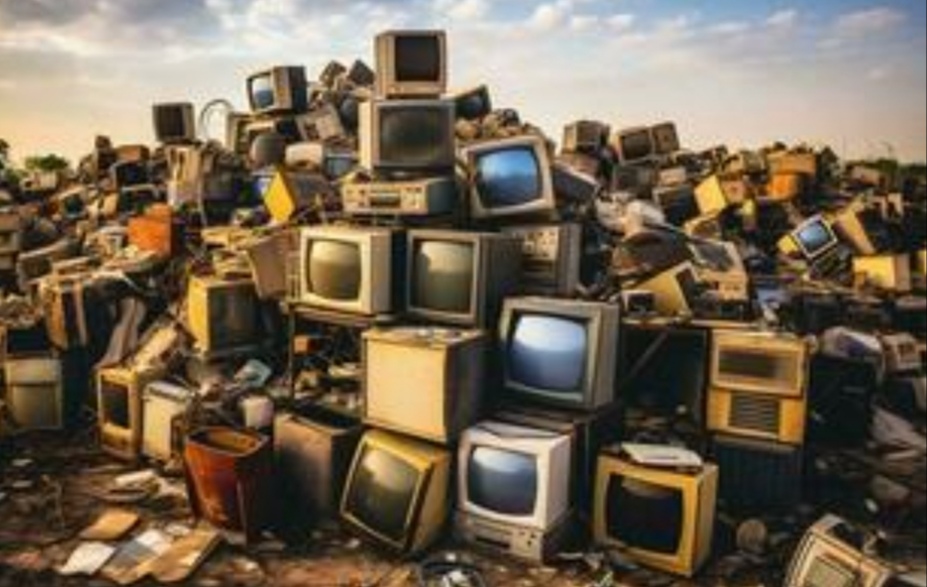
Why Is It Important to Recycle Old Gadgets?
Recycling old gadgets is crucial to reduce environmental pollution, conserve natural resources, and minimize e-waste in landfills.
Many electronic devices contain valuable materials like gold, silver, and copper, which can be reused in manufacturing.
Additionally, recycling prevents harmful toxins, such as mercury and lead, from polluting the environment.
What Are the Steps for Recycling Old Gadgets?
- Backup Your Data: Before recycling, back up all important data from your devices.
- Wipe Your Data: Use secure tools to erase personal data completely.
- Find a Certified Recycler: Look for reputable e-waste recycling centers near you or online.
- Drop Off or Mail In: Some recyclers offer mail-in programs, while others accept drop-offs at designated locations.
- Verify Ethical Recycling: Ensure that the recycler complies with environmental and ethical guidelines.
Can I Recycle Broken or Non-Working Gadgets?
Yes, most certified e-waste recyclers accept broken or non-working devices. These recyclers dismantle gadgets to extract valuable components and safely dispose of hazardous materials.
What Gadgets Can Be Recycled?
You can recycle a wide range of electronics, including:
- Smartphones and tablets
- Laptops and desktops
- Televisions and monitors
- Printers and scanners
- Gaming consoles
- Smartwatches and fitness trackers
- Household gadgets like microwaves and toasters
If you’re unsure about a specific device, contact your local recycling center for clarification.
Where Can I Recycle Old Gadgets?
- Retail Stores: Many retailers, such as Best Buy and Staples, offer electronic recycling programs.
- Manufacturer Take-Back Programs: Brands like Apple, Samsung, and Dell allow you to return old devices for recycling.
- Certified Recycling Centers: Search for R2 or e-Stewards certified recyclers near you.
- Community E-Waste Drives: Participate in local e-waste collection events.
[Use this tool to find certified recycling options near you]
How Do I Ensure My Data Is Safe Before Recycling?
Before recycling, follow these steps to secure your data:
- Backup all important files to an external drive or cloud storage.
- Log out of Accounts: Remove all accounts linked to the device.
- Perform a Factory Reset: Reset the device to its original settings.
- Use Data Wiping Tools: Software like [Eraser] or [Blancco] can permanently delete sensitive information.
Can I Donate Old Gadgets Instead of Recycling Them?
Absolutely! Donating is an excellent option if your gadgets are still functional.
Non-profit organizations, schools, and community centers often accept used electronics to provide access to technology for those in need.
Make sure to clear your data before donating.
Are There Creative Ways to Repurpose Old Gadgets?
Yes, you can repurpose old devices into useful tools:
- Turn a smartphone into a security camera.
- Use a tablet as a digital photo frame.
- Convert a laptop into a home media server.
Explore our detailed guide on [creative ways to repurpose old gadgets] for more ideas.
What Happens If I Throw Electronics in the Trash?
Throwing electronics in the trash can lead to environmental pollution and may be illegal in some regions.
E-waste contains toxic substances that can contaminate soil and water if not disposed of properly.
Moreover, you may face fines or penalties for violating e-waste disposal laws.
Are There Costs Associated with Recycling Old Gadgets?
In many cases, recycling is free, but some services may charge a small fee for handling specific items like CRT monitors or televisions.
Some manufacturers and retailers offer free take-back programs to encourage recycling.
How Can I Spread Awareness About E-Waste Recycling?
- Educate Others: Share information about e-waste’s environmental impact with friends and family.
- Participate in Campaigns: Join or organize community recycling drives.
- Support Ethical Practices: Use social media to highlight organizations and programs promoting sustainable recycling.
Conclusion: Taking the First Step Towards Responsible Recycling
Recycling old gadgets is no longer just an option; it’s a necessity in today’s tech-driven world.
By learning how to recycle old gadgets effectively, you can contribute to reducing e-waste, conserving precious resources, and protecting our environment for future generations.
Whether you’re donating, repurposing, or using certified recycling services, each step you take makes a meaningful difference.
Empowering Change Through Small Actions
Every small effort—be it wiping your data before recycling, finding a reliable e-waste center, or spreading awareness—helps build a sustainable future.
If you’ve been wondering where to start, now is the perfect time to act.
Use this guide as your comprehensive resource to make informed decisions about your outdated electronics.
Why Recycling Matters More Than Ever
In a world where electronic consumption continues to rise, improper disposal can have devastating effects on our planet.
Recycling not only prevents toxic materials from harming ecosystems but also promotes the recovery of valuable components, supporting a circular economy.
By choosing to recycle, you’re taking a stand against e-waste and inspiring others to do the same.
Let’s Make Recycling a Habit
The process of how to recycle old gadgets doesn’t have to be complicated.
By incorporating small habits into your routine—like responsibly upgrading your devices or participating in local e-waste drives—you can make a big impact.
Share your knowledge with friends and family to amplify this change.
Start Your Recycling Journey Today
Don’t wait for your old gadgets to pile up. Take action today by:
- Identifying unused electronics in your home.
- Backing up and wiping your data securely.
- Finding certified e-waste recyclers or donation centers.
- Exploring creative ways to repurpose devices.
[Click here to discover trusted recycling programs and tools to help you recycle responsibly.]
A Call to Action: Join the Movement for Sustainability
Together, we can turn e-waste into an opportunity for positive change.
Let’s work towards a cleaner, greener future by embracing sustainable practices.
Share this guide, implement these strategies, and be part of the solution today.
Remember, [your small steps towards recycling can lead to significant environmental benefits].
Take action now, because every gadget recycled brings us closer to a better world.
You might also like :

